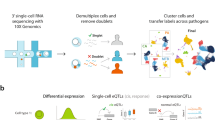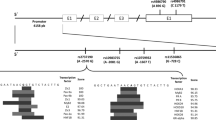Abstract
Toll-like receptor (TLR)-mediated innate immune responses are important in early host defense. Using a candidate gene approach, we previously identified genetic variation within TLR1 that is associated with hyper-responsiveness to a TLR1/2 agonist in vitro and with death and organ dysfunction in patients with sepsis. Here we report a genome-wide association study (GWAS) designed to identify genetic loci controlling whole blood cytokine responses to the TLR1/2 lipopeptide agonist, Pam3CSK4 (N-palmitoyl-S-dipalmitoylglyceryl Cys-Ser-(Lys)4) ex vivo. We identified a very strong association (P<1 × 10−27) between genetic variation within the TLR10/1/6 locus on chromosome 4, and Pam3CSK4-induced cytokine responses. This was the predominant association explaining over 35% of the population variance for this phenotype. Notably, strong associations were observed within TLR10, suggesting that genetic variation in TLR10 may influence bacterial lipoprotein-induced responses. These findings establish the TLR10/1/6 locus as the dominant common genetic factor controlling interindividual variability in Pam3CSK4-induced whole blood responses in the healthy population.
This is a preview of subscription content, access via your institution
Access options
Subscribe to this journal
Receive 6 digital issues and online access to articles
$119.00 per year
only $19.83 per issue
Buy this article
- Purchase on Springer Link
- Instant access to full article PDF
Prices may be subject to local taxes which are calculated during checkout



Similar content being viewed by others
References
Akira S, Takeda K, Kaisho T . Toll-like receptors: critical proteins linking innate and acquired immunity. Nat Immunol 2001; 2: 675–680.
Takeuchi O, Sato S, Horiuchi T, Hoshino K, Takeda K, Dong Z et al. Cutting edge: role of Toll-like receptor 1 in mediating immune response to microbial lipoproteins. J Immunol 2002; 169: 10–14.
Takeuchi O, Kawai T, Mühlradt PF, Morr M, Radolf JD, Zychlinsky A et al. Discrimination of bacterial lipoproteins by Toll-like receptor 6. Int Immunol 2001; 13: 933–940.
Guan Y, Ranoa DRE, Jiang S, Mutha SK, Li X, Baudry J et al. Human TLRs 10 and 1 share common mechanisms of innate immune sensing but not signaling. J Immunol 2010; 184: 5094–5103.
Drennan MB, Nicolle D, Quesniaux VJF, Jacobs M, Allie N, Mpagi J et al. Toll-like receptor 2-deficient mice succumb to Mycobacterium tuberculosis infection. Am J Pathol 2004; 164: 49–57.
Echchannaoui H, Frei K, Schnell C, Leib SL, Zimmerli W, Landmann R . Toll-like receptor 2-deficient mice are highly susceptible to Streptococcus pneumoniae meningitis because of reduced bacterial clearing and enhanced inflammation. J Infect Dis 2002; 186: 798–806.
Takeuchi O, Hoshino K, Akira S . Cutting edge: TLR2-deficient and MyD88-deficient mice are highly susceptible to Staphylococcus aureus infection. J Immunol 2000; 165: 5392–5396.
Torres D, Barrier M, Bihl F, Quesniaux VJF, Maillet I, Akira S et al. Toll-like receptor 2 is required for optimal control of Listeria monocytogenes infection. Infect Immun 2004; 72: 2131–2139.
Takeuchi O, Kaufmann A, Grote K, Kawai T, Hoshino K, Morr M et al. Cutting edge: preferentially the R-stereoisomer of the mycoplasmal lipopeptide macrophage-activating lipopeptide-2 activates immune cells through a toll-like receptor 2- and MyD88-dependent signaling pathway. J Immunol 2000; 164: 554–557.
Brightbill HD, Libraty DH, Krutzik SR, Yang RB, Belisle JT, Bleharski JR et al. Host defense mechanisms triggered by microbial lipoproteins through toll-like receptors. Science 1999; 285: 732–736.
Aliprantis AO, Yang RB, Mark MR, Suggett S, Devaux B, Radolf JD et al. Cell activation and apoptosis by bacterial lipoproteins through toll-like receptor-2. Science 1999; 285: 736–739.
Okusawa T, Fujita M, Nakamura J-I, Into T, Yasuda M, Yoshimura A et al. Relationship between structures and biological activities of mycoplasmal diacylated lipopeptides and their recognition by toll-like receptors 2 and 6. Infect Immun 2004; 72: 1657–1665.
Takeuchi O, Hoshino K, Kawai T, Sanjo H, Takada H, Ogawa T et al. Differential roles of TLR2 and TLR4 in recognition of gram-negative and gram-positive bacterial cell wall components. Immunity 1999; 11: 443–451.
Sato M, Sano H, Iwaki D, Kudo K, Konishi M, Takahashi H et al. Direct binding of Toll-like receptor 2 to zymosan, and zymosan-induced NF-kappa B activation and TNF-alpha secretion are down-regulated by lung collectin surfactant protein A. J Immunol 2003; 171: 417–425.
Wurfel MM, Gordon AC, Holden TD, Radella F, Strout J, Kajikawa O et al. Toll-like receptor 1 polymorphisms affect innate immune responses and outcomes in sepsis. Am J Respir Crit Care Med 2008; 178: 710–720.
Wurfel MM, Park WY, Radella F, Ruzinski J, Sandstrom A, Strout J et al. Identification of high and low responders to lipopolysaccharide in normal subjects: an unbiased approach to identify modulators of innate immunity. J Immunol 2005; 175: 2570–2578.
Mrabet-Dahbi S, Dalpke AH, Niebuhr M, Frey M, Draing C, Brand S et al. The Toll-like receptor 2 R753Q mutation modifies cytokine production and Toll-like receptor expression in atopic dermatitis. J Allergy Clin Immunol 2008; 121: 1013–1019.
Pino-Yanes M, Corrales A, Casula M, Blanco J, Muriel A, Espinosa E et al. Common variants of TLR1 associate with organ dysfunction and sustained pro-inflammatory responses during sepsis. PLoS One 2010; 5: e13759.
Johnson CM, Lyle EA, Omueti KO, Stepensky VA, Yegin O, Alpsoy E et al. Cutting edge: a common polymorphism impairs cell surface trafficking and functional responses of TLR1 but protects against leprosy. J Immunol 2007; 178: 7520–7524.
Ma X, Liu Y, Gowen BB, Graviss EA, Clark AG, Musser JM . Full-exon resequencing reveals toll-like receptor variants contribute to human susceptibility to tuberculosis disease. PLoS One 2007; 2: e1318.
Barreiro LB, Ben-Ali M, Quach H, Laval G, Patin E, Pickrell JK et al. Evolutionary dynamics of human Toll-like receptors and their different contributions to host defense. PLoS Genet 2009; 5: e1000562.
Georgel P, Macquin C, Bahram S . The heterogeneous allelic repertoire of human toll-like receptor (TLR) genes. PLoS One 2009; 4: e7803.
Wong SH, Gochhait S, Malhotra D, Pettersson FH, Teo YY, Khor CC et al. Leprosy and the adaptation of human toll-like receptor 1. PLoS Pathog 2010; 6: e1000979.
Stevens VL, Hsing AW, Talbot JT, Zheng SL, Sun J, Chen J et al. Genetic variation in the toll-like receptor gene cluster (TLR10-TLR1-TLR6) and prostate cancer risk. Int J Cancer 2008; 123: 2644–2650.
Hamann L, Bedu-Addo G, Eggelte TA, Schumann RR, Mockenhaupt FP . The toll-like receptor 1 variant S248N influences placental malaria. Infect Genet Evol 2010; 10: 785–789.
Hasan U, Chaffois C, Gaillard C, Saulnier V, Merck E, Tancredi S et al. Human TLR10 is a functional receptor, expressed by B cells and plasmacytoid dendritic cells, which activates gene transcription through MyD88. J Immunol 2005; 174: 2942–2950.
Imler J-L, Hoffmann JA . Toll signaling: the TIReless quest for specificity. Nat Immunol 2003; 4: 105–106.
Xu Y, Tao X, Shen B, Horng T, Medzhitov R, Manley JL et al. Structural basis for signal transduction by the Toll/interleukin-1 receptor domains. Nature 2000; 408: 111–115.
Kormann MSD, Depner M, Hartl D, Klopp N, Illig T, Adamski J et al. Toll-like receptor heterodimer variants protect from childhood asthma. J Allergy Clin Immunol 2008; 122: 86–92 92.e1–8.
Velez DR, Wejse C, Stryjewski ME, Abbate E, Hulme WF, Myers JL et al. Variants in toll-like receptors 2 and 9 influence susceptibility to pulmonary tuberculosis in Caucasians, African-Americans, and West Africans. Hum Genet 2010; 127: 65–73.
Hawn TR, Scholes D, Li SS, Wang H, Yang Y, Roberts PL et al. Toll-like receptor polymorphisms and susceptibility to urinary tract infections in adult women. PLoS One 2009; 4: e5990.
Chen Y-C, Giovannucci E, Kraft P, Lazarus R, Hunter DJ . Association between Toll-like receptor gene cluster (TLR6, TLR1, and TLR10) and prostate cancer. Cancer Epidemiol Biomarkers Prev 2007; 16: 1982–1989.
Lindström S, Hunter DJ, Grönberg H, Stattin P, Wiklund F, Xu J et al. Sequence variants in the TLR4 and TLR6-1-10 genes and prostate cancer risk. Results based on pooled analysis from three independent studies. Cancer Epidemiol Biomarkers Prev 2010; 19: 873–876.
Purdue MP, Lan Q, Wang SS, Kricker A, Menashe I, Zheng T-Z et al. A pooled investigation of Toll-like receptor gene variants and risk of non-Hodgkin lymphoma. Carcinogenesis 2009; 30: 275–281.
Abad C, González-Escribano MF, Diaz-Gallo LM, Lucena-Soto JM, Márquez JL, Leo E et al. Association of Toll-like receptor 10 and susceptibility to Crohn’s disease independent of NOD2. Genes Immun 2011; 12: 635–642.
Pierik M, Joossens S, Van Steen K, Van Schuerbeek N, Vlietinck R, Rutgeerts P et al. Toll-like receptor-1, -2, and -6 polymorphisms influence disease extension in inflammatory bowel diseases. Inflamm Bowel Dis 2006; 12: 1–8.
Lazarus R, Raby BA, Lange C, Silverman EK, Kwiatkowski DJ, Vercelli D et al. TOLL-like receptor 10 genetic variation is associated with asthma in two independent samples. Am J Respir Crit Care Med 2004; 170: 594–600.
Veltkamp M, van Moorsel CHM, Rijkers GT, Ruven HJT, Grutters JC . Genetic variation in the Toll-like receptor gene cluster (TLR10-TLR1-TLR6) influences disease course in sarcoidosis. Tissue Antigens 2012; 79: 25–32.
Sutherland AM, Walley KR, Nakada T-A, Sham AHP, Wurfel MM, Russell JAA . Nonsynonymous polymorphism of IRAK4 associated with increased prevalence of gram-positive infection and decreased response to toll-like receptor ligands. J Innate Immun 2011; 3: 447–458.
Arcaroli J, Silva E, Maloney JP, He Q, Svetkauskaite D, Murphy JR et al. Variant IRAK-1 haplotype is associated with increased nuclear factor-kappaB activation and worse outcomes in sepsis. Am J Respir Crit Care Med 2006; 173: 1335–1341.
Khor CC, Chapman SJ, Vannberg FO, Dunne A, Murphy C, Ling EY et al. A Mal functional variant is associated with protection against invasive pneumococcal disease, bacteremia, malaria and tuberculosis. Nat Genet 2007; 39: 523–528.
Browning BL, Browning SR . A unified approach to genotype imputation and haplotype-phase inference for large data sets of trios and unrelated individuals. Am J Hum Genet 2009; 84: 210–223.
Anderson CA, Pettersson FH, Clarke GM, Cardon LR, Morris AP, Zondervan KT . Data quality control in genetic case-control association studies. Nat Protoc 2010; 5: 1564–1573.
Acknowledgements
This work was supported by the National Heart, Lung, and Blood Institute Grant R01 HL089807-01 (to MMW), National Institute of Allergy and Infectious Diseases Grant U54 AI057141 (to MMW), National Institute of Aging Longevity Consortium Grant U19AG023122 (to APR), and the NIH NHLBI training grant T32 HL 7287-33 (CM).
Author information
Authors and Affiliations
Corresponding author
Ethics declarations
Competing interests
The authors declare no conflict of interest.
Additional information
Supplementary Information accompanies the paper on Genes and Immunity website
Rights and permissions
About this article
Cite this article
Mikacenic, C., Reiner, A., Holden, T. et al. Variation in the TLR10/TLR1/TLR6 locus is the major genetic determinant of interindividual difference in TLR1/2-mediated responses. Genes Immun 14, 52–57 (2013). https://doi.org/10.1038/gene.2012.53
Received:
Revised:
Accepted:
Published:
Issue Date:
DOI: https://doi.org/10.1038/gene.2012.53
Keywords
This article is cited by
-
Prioritization of candidate causal genes for asthma in susceptibility loci derived from UK Biobank
Communications Biology (2021)
-
Are toll-like receptors potential drug targets for atherosclerosis? Evidence from genetic studies to date
Immunogenetics (2019)
-
Epistatic effect of TLR-1, -6 and -10 polymorphisms on organic dust-mediated cytokine response
Genes & Immunity (2017)
-
A case–control study of innate immunity pathway gene polymorphisms in Puerto Ricans reveals association of toll-like receptor 2 +596 variant with asthma
BMC Pulmonary Medicine (2016)
-
Listeria monocytogenes Inhibits Serotonin Transporter in Human Intestinal Caco-2 Cells
Microbial Ecology (2016)



